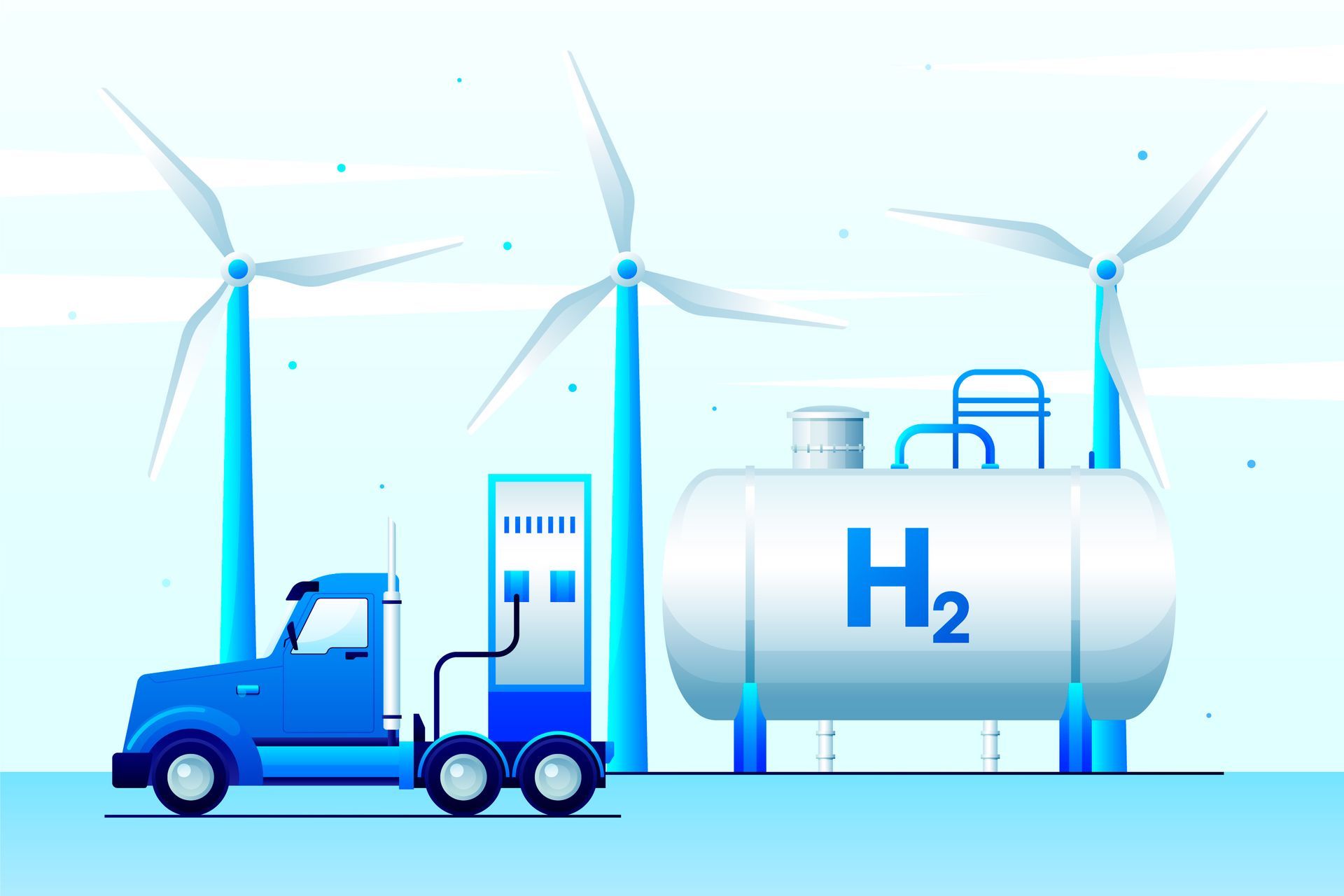What attributes might doctoral graduates need to contribute to the world of the future? A ‘modest’ reflection
Authors :
Neda Bebiroglu & Lynn McAlpine
Change is an enduring feature of our modern lives. As the climate crisis, the ongoing wars, the COVID pandemic, the global movement for social justice, and the emerging developments in artificial intelligence have shown, change may be very sudden or creep up on us, but it is often disruptive. We can expect future societal disruptions that impact the way we work, interact, and think. This uncertainty is a challenge for all. How can we prepare future generations for an unknown and constantly changing future?
On this paper, we reflected on the needs of a specific group, future generations of doctoral graduates, given our research on their careers. We argue that a major purpose of the doctorate should be to help individuals grapple with still unknown issues in ways that benefit their career potential across labour sectors, society, and the world.
One becomes an expert in a specific scientific field through doctoral training While in the future, being really good at something or being an “expert” will still be important, it may not be enough. The question we ask is “in the face of evolving global and societal change, what attributes should we reinforce in doctoral graduates so they can effectively respond to change and continue advancing their careers and contributing to society, and the world?
Based on our reading of the research as well as our own research, we argue that the answer to the question can be encapsulated in an “open stance”. In an environment where change happens regularly, a crucial stance is openness, curiosity, critical assessment, and a readiness to change and learn – and to think, value and act differently. An important aspect of this stance is being forward thinking and curious, good at adapting and adjusting to changing tasks, social and environmental features, while not doing so unquestioningly. Of course, some doctoral programs may already possess some of these elements; our proposal is that these elements should serve as criteria to be aimed for, reinforced, strenghtened and highlighted.
Further, there is one primary attribute “versatility” and five secondary attributes: (characterized as 5C’s for ease of recall): “collaborative”, “communicative”, “creative”, “cross-skilled” and “caring”) that we may reinforce and strengthen in doctoral scientists to help them influence change. We describe each concept below.
Versatality. The 5C’s are connected and integrated coherently through “versatility”, Versatality has two aspects:
- Across different attributes: Being versatile means being skilled at ensuring a coherence, a weaving together, in ways that different attributes support each other. Thus, being versatile requires prioritizing and recalibrating attributes in light of the evolving or changing situation. For instance, temporarily focusing on communication and caring over collaboration to resolve unexpected relational issues; or learning new skills in light of emerging technologies to re-calibrate the nature of cross-skilling and creativity.
- Within each attribute across different contexts, collaborators, jobs, tasks, and functions: Versatility ensures a fluidity of the same secondary attribute across. For instance, being a versatile communicator requires recognizing different audiences (students, researchers, clients), effectively listening to them, decoding their messages, and in light of this new knowledge reinventing the ways to respond.
The secondary attributes that are particularly important to reinforce are:
Collaborative. The problems we are facing in the world are complex and multidimensional, which means that our work is and will increasingly require collaboration. These collaborations will be at every level, collaborations between laboratories, disciplines, sectors, and across a diverse set of people coming from different social, ethnic, professional, and educational backgrounds (academic and non-academic participants, as it is the case for transdisciplinary research). Collaborative doctoral graduates who are versatile can efficiently and fluidly shift between contexts, across a diverse set of collaborators. Such individuals are motivated to gain from and contribute to multiple diversities and perspectives and have a willingness to modify their own views based on these collaborations.
Communicative. Doctoral graduates will interact more and more with a diverse set of individuals in order to translate complex issues into simple ideas. They will need to be versatile communicators, adjusting their style of communication to their audiences to influence their thinking and actions, but also want to be influenced by them to develop broader perspectives. Versatile communicators are also skilled at integrating into their repertoires new means of communication, emerging from the technological advances– yet still remain aware of the misuses of such advances.
Creative. In a changing environment, creativity and to find innovative solutions to complex problems will be a necessity. Creatives see the unexpected as potentially serendipitous and the uncertainty as an opportunity to imaginatively think across problems. We will need versatile creators, who regardless of the issue (e.g., a team communication problem, a project that experiences disruption, a social, economic or technical concern), or the context (e.g., work, school), or the task (e.g., managing a project, collecting data), that has been unyielding to change, will use exploratory thinking to see things in new ways, seize new ideas, and then run with them once fully explored and critiqued.
Cross-skilled. We will need cross-skilled individuals who are open to and good at regularly learning new skills. Therefore, doctoral graduates, in addition to their domain-specific skills (expertise, data analysis, visualisation, etc.), will be ready to learn and integrate new skills and apply them in different ways across varied tasks, sectors (government, university or industry), contexts and job functions. Versatility regarding being cross-skilled requires an ease in shifting between skills and combining skills depending on the situational needs, taking on new roles outside one’s existing responsibilities in order to positively impact the situation.
Caring: Research professionals need to live, enact, practice an ethic of care. Such an ethic means focusing on the real, lived experience of people in all their diversity: treating individuals with respect, seeking to enable positive impacts, and contribute through their work to their communities and society as a whole. Versatility regarding being caring implies the capacity to observe where social problems lie that one’s expertise could help address. It could equally encompass changing one’s interpersonal approach based on the needs of others and to have a meta-perception that each relationship and interaction is unique, complex, and different.
Many doctoral programs strive to give and reinforce some of these attributes. Current doctoral training in many parts of the world is the training of competitive experts who are trained to function in a specific environment, on a specific topic, doing specific tasks, mostly with similar-minded people. Then the question we should ask ourselves as educators, researchers, supervisors, professors, or research managers is: Are we cultivating an open stance? Are we considering versatility when we reinforce an attribute? And most importantly, how far are we to prepare doctoral graduates so that they can grapple with still unknown issues in ways that benefit society, the world and themselves?
Bios
Neda Bebiroglu
is a Scientific Advisor and Coordinator at the Observatory of Research and Scientific Careers at the Fonds de la Recherche Scientifique – FNRS, Belgium. Her research examines factors that shape the career pathways of doctoral and postdoctoral researchers. She currently serves as member of the OECD-GSF expert group on “career options for doctoral and postdoctoral scientists”.
Lynn McAlpine
is Professor Emerita of Higher Education Development at the University of Oxford. She is internationally recognized for her research, conducted in the UK, Europe and Canada, into doctorate and post-doctorate career trajectories both within and beyond the academy. She receives frequent international invitations to do sessions that explore the implications of this research from pedagogical and policy perspectives.
More articles!

By EuroScientist Editor
•
07 Sep, 2023
Hydrogen fuel can be made from wood waste in a clean and cost-efficient way at heat and power plants – and its developers hope it could change the narrative around this sometimes-controversial solution. By Steve Gillman & Fintan Burke The costs of scaling up hydrogen power, along with the potential amount of energy and natural resources to produce it, have seen this fuel source face increased scrutiny as a solution against climate change. “The majority of our electricity and hydrogen is produced from fossil fuels. This, of course, is not sustainable as it contributes to climate change,” said Michael Bartlett, a founder of Phoenix Biopower, a company that turns natural waste into combustible gas, like hydrogen. As part of a research project called Bio-FlexGen, Bartlett is developing ‘green hydrogen’ from biomass waste from the forestry sector. “Our ultimate goal is to provide a secure, renewable and low-cost energy for society and industry,” he adds. Bio-FlexGen, and its multidisciplinary team of 14 partners from five EU countries, aim to provide the technology for combined heat and power plants (CHP) that can also generate a supply of green hydrogen in addition to usual outputs of electricity and heat. To make green hydrogen, Bio-FlexGen will use a combination of two main technologies – a gas turbine and a gasifier. First, waste biomass is added in a gasifier at pressure and heated up to 850 Celsius – a temperature so hot that it releases other gases, mainly hydrogen, methane, and carbon monoxide. The next step sees water and steam added to cool before it passes through a cleaning filter. “Once we have cleaned up the gases from the gasifier, we can either send it to the gas turbine for combustion and electricity generation or to a hydrogen production unit,” said Bartlett, adding that this process gives “enormous power” and efficiency to the CHP plant. The high temperatures of this process, over 1400 Celsius in the gas turbine combustor, also result in greater power generation. To ensure a high efficiency, the system is designed to gather waste heat and recycle it back into the gas turbine in the form of hot steam. This, Bartlett says, can result in double the electricity output that is typical for a given amount of biomass. The new approach means the CHP plant then has three modes of operation; 1/ produce heat and electricity efficiently from biomass in the winter 2/, produce green hydrogen and biogenic CO2 from biomass in the summer 3/ utilise hydrogen in the gas turbine for peak power. This flexibility means it can help keep costs low and stable and complements the hourly, weekly and seasonal variability of solar and wind power. Converting critics and pushing EU hydrogen plans ahead Bio-FlexGen’s systematic approach to incorporating green hydrogen could go a long way in negating the main arguments against this renewable energy, primarily the amount of natural resources it requires for its production. According to Rystad Energy, 620 million cubic meters of water are needed to produce 85% of the green hydrogen capacity planned for 2040. However, environmental groups like Greenpeace argue that renewable power alone is not enough to produce the needed amount of green hydrogen. If anything, they claim this may end up increasing fossil fuel demand. But Bio-FlexGen’s green hydrogen production utilises oxygen to drive the gasification process, itself a by-product of green hydrogen production from wind and solar power. “The main advantage of getting hydrogen from biomass compared to wind or solar is that it has less variability and is not dependent on electricity price,” said Bartlett. “It also requires less H2 storage (you store biomass instead) for when the wind doesn't blow.” When producing electricity from biomass in the CHP plant, a lot of steam is needed in the gas turbine for the best effect. In fact, 50% of the exhaust is just water vapour. This water is recovered, treated and recycled back to this process, and an excess of clean water can even be produced for other consumers. When this water is recovered, it also generates large amounts of heat, which the project can use further in district heating networks or other processes. In this way all the energy in the biomass is efficiently used. “We are working very hard to ensure that we are part of a circular biomass utilisation and that we are using hydrogen in the safest possible way,” explains Bartlett, adding that the project will make a “significant contribution to the decarbonisation of the energy system”. The first commercial plant using Bio-FlexGen’s approach is planned for 2030, in which the power plant will operate on biomass in the winter months and use 100% green hydrogen in the summer months, therefore displacing demand for fossil fuels in peak periods – a goal increasingly shared by EU policymakers. Following the war in Ukraine, and the embargo on Russian oil imports into the EU, the European Commission outlined a ‘Hydrogen Accelerator' concept to scale up renewable hydrogen deployment. This ‘REPowerEU Plan’ wants the EU to produce 10 million tonnes of renewable hydrogen by 2030, with the Commission recently proposing criteria that Member States can follow to ensure they produce green hydrogen, including that it only be produced when and where sufficient renewable energy is available. As BioFlexGen’s power plant will operate with up to 100% green hydrogen from solar and wind, with an optimised combination of bioenergy, it is already on course to meet these criteria. Bartlett also believes that the project has brought together “amazing, competent people” that can play a key role in developing green hydrogen further.

By EuroScientist Editor
•
07 Sep, 2023
Author: Jane Marsh Scientists are researching a theory known as positive climate tipping points. While most people talking about tipping points concentrate on their negative consequences, such as irreparable harm to ecosystems, positive tipping points provide a ray of hope. These points may result in favorable and constructive changes to our planet's climate system as the effects of climate change continue. Learn more about the idea of positive climate tipping points, consider their possible advantages and discuss their significance in understanding and tackling the problems caused by climate change. Understanding Tipping Points To fully understand positive climate tipping points, it is essential first to understand what tipping points are. Tipping points are key thresholds in a complex system where a minor change can cause significant and sometimes irreversible changes in the system's behavior. Harmful climate change tipping points may be the first type that comes to mind. These relate to occurrences like the melting of significant ice sheets or the disruption of essential ocean currents, which can have quick and harmful repercussions. However, there are also positive tipping points that may shape the future climate. Positive Climate Tipping Points Unlike negative climate tipping points, positive ones can increase ecosystem resilience and bring about encouraging changes. These turning points take place when certain environmental activities or changes trigger self-reinforcing mechanisms that improve the earth's capacity to absorb carbon dioxide, lower greenhouse gas emissions or support the preservation of vital habitats. Forest preservation and restoration is one illustration of a favorable climate tipping point. As forests grow and recover, they sequester a greater amount of carbon dioxide, which lowers the levels of greenhouse gases in the atmosphere. This process creates a positive feedback loop that encourages greater forest development and improves the ability of these ecosystems to control the temperature. Relevance and Implications of Positive Tipping Points Positive climatic tipping points must be recognized and utilized for mitigation and adaptation initiatives to succeed. Scientists and decision-makers can create targeted interventions to improve the planet's resilience and lessen the effects of climate change by identifying and utilizing these tipping points. Climate tipping points can also encourage and inspire group action. They provide concrete instances of how individual and group activities, such as reforestation programs, sustainable land management techniques and ecosystem restoration projects, can significantly contribute to the fight against climate change. The general public may take inspiration in carrying out sustainable behaviors or supporting laws that help effect positive change. Emphasizing these positive tipping points' potential advantages and ripple effects encourages individuals at all levels. While positive climate tipping points have great potential, it is important to recognize that our understanding of them is still developing. Further research is necessary. These tipping points require identification, monitoring and measurement, which demands continual study and scientific cooperation. Scientists use advanced modeling approaches and thorough data analysis to find potential positive tipping points across different ecosystems. Researchers are also looking into how positive and negative tipping points are connected. Scientists can create comprehensive plans to negotiate the intricacies of climate change and maximize beneficial results by thoroughly comprehending the relationships between these tipping points. Positive Climate Tipping Points Could Be a Game-Changer Positive climate tipping points demonstrate optimism in the fight against climate change. If people locate and utilize these tipping points, we may be able to develop self-reinforcing mechanisms that positively affect our planet's climate system. Scientists, decision-makers and people can take proactive measures in climate change prevention and adaptation by comprehending the significance of positive tipping points and their potential ramifications. The complexity of positive climate tipping points must be further understood through ongoing research and monitoring projects to successfully navigate the challenges of climate change and create a more resilient and sustainable future.

By EuroScientist Editor
•
18 Jul, 2023
It’s no secret that the planet is getting warmer, but July 2023 saw record-high temperatures that really turned heads. 2023 is an El Niño year — in addition to human-caused climate change, the Earth is undergoing an expected cycle of exceptionally warm weather that occurs every few years.
This double whammy has many people reaching for their water bottles and cranking up the AC. Why are scientists so worried about the heat?

By EuroScientist Editor
•
03 Jul, 2023
Hydrogen fuel cells have garnered a lot of attention recently. As the global conversation shifts to emissions-free energy, many people want to know how fuel cells work, whether they could replace internal combustion engines someday and if they can power homes. Here are answers to common questions about the technology.



